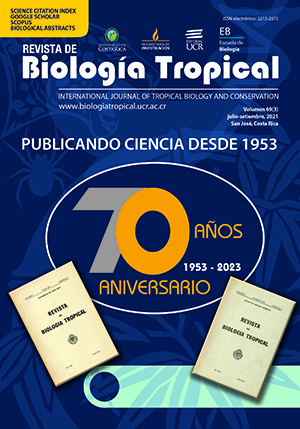Resumen
Introducción: La variabilidad en la estructura de las comunidades acuáticas se atribuye frecuentemente a cambios ambientales, no obstante, en ambientes estables como ríos regulados, las interacciones tróficas podrían ser otro factor ambiental clave determinante de la estructura de estas comunidades. Estas alteraciones podrían provocar un mayor crecimiento de algas y, a su vez, cambios en los grupos funcionales y en la composición de la comunidad de macroinvertebrados favoreciendo la dominancia de determinados grupos de organismos. Objetivo: Identificar el efecto de los cambios ambientales y de la estructura del ficoperifiton sobre la comunidad de macroinvertebrados de ríos Andinos regulados. Métodos: Se analizaron datos ambientales y biológicos recolectados en muestreos trimestrales realizados entre 2010 y 2018 en dos ríos de los Andes Centrales (Antioquia - Colombia), para un total de 27 muestras. La recolección de muestras empleó métodos estandarizados. Se utilizaron diferentes modelos estadísticos para establecer patrones espaciales y temporales de las variables ambientales, de la abundancia y/o densidad y diversidad de ficoperifiton y de los macroinvertebrados, así como las relaciones tróficas que existen entre ellos. Resultados: Se encontró que los ríos regulados presentan relativamente poca variabilidad ambiental. Los parámetros ambientales con mayor variación fueron: temperatura, turbidez y ortofosfatos; las dos últimas variables abióticas fueron las que más aportaron a la inestabilidad bentónica. Conclusión: La presencia de macroinvertebrados raspadores y recolectores fue más afectada por la estabilidad de la densidad del ficoperifiton que por las variables ambientales, evidenciando la importancia de las interacciones tróficas en ríos regulados y el control bottoom up en estos ecosistemas.
##plugins.facebook.comentarios##

Esta obra está bajo una licencia internacional Creative Commons Atribución 4.0.
Derechos de autor 2023 Revista de Biología Tropical



